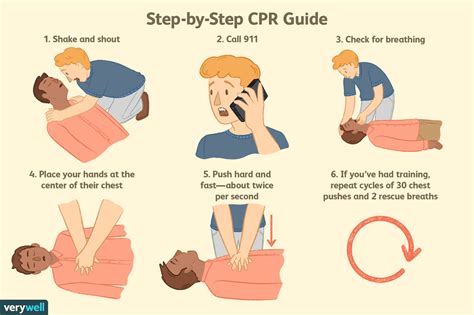CPR: How Often Should You Rotate for Maximum Impact?
Cardiopulmonary resuscitation (CPR) is a life-saving technique that can significantly improve the chances of survival for someone experiencing cardiac arrest. While the core principles remain consistent, the effectiveness of CPR hinges on several factors, including proper hand placement, consistent compression depth and rate, and—crucially—the frequency of rescuer rotation. This article will delve into the optimal rotation strategy for maximum CPR impact, addressing common questions and concerns.
Why Rotate During CPR?
Rescuer fatigue is a major limiting factor in the effectiveness of CPR. Sustained chest compressions require significant physical exertion, leading to decreased compression depth and rate, ultimately reducing the chances of successful resuscitation. Rotating rescuers allows for fresh individuals to take over, maintaining consistent, high-quality compressions throughout the resuscitation process. This ensures the victim receives the best possible chance of survival.
How Often Should You Rotate?
There isn't a single, universally agreed-upon timeframe for rescuer rotation during CPR. The ideal frequency depends on several factors, including:
- The fitness level of the rescuers: Highly fit individuals might be able to perform compressions for longer periods than less fit individuals.
- The availability of rescuers: If multiple rescuers are present, more frequent rotations are feasible. In scenarios with limited personnel, rotations might be less frequent, necessitating careful monitoring of rescuer fatigue.
- The overall duration of the resuscitation: Longer resuscitation attempts necessitate more frequent rotations to mitigate fatigue.
General Guidelines: Many emergency medical services (EMS) and training organizations recommend considering a rotation every 2 minutes. However, observing the rescuer for signs of fatigue is paramount. If a rescuer shows signs of exhaustion—such as decreased compression rate or depth, trembling hands, or visible distress—they should be immediately relieved.
What are the signs of rescuer fatigue?
Recognizing the signs of rescuer fatigue is critical for maintaining effective CPR. Look for the following:
- Decreased compression rate: Falling below the recommended rate of 100-120 compressions per minute.
- Reduced compression depth: Compressions shallower than the recommended 2-2.4 inches.
- Inconsistent compressions: Erratic rhythm or depth of compressions.
- Visible physical signs of fatigue: Trembling hands, sweating, breathlessness, or general exhaustion.
- Changes in rescuer demeanor: Signs of frustration, decreased focus, or mental fatigue.
What happens if rescuers don't rotate frequently enough?
Insufficient rescuer rotation can lead to several negative consequences:
- Reduced compression quality: Fatigue results in shallower and slower compressions, reducing blood flow to the brain and other vital organs.
- Increased risk of rescuer injury: Sustained exertion can lead to muscle strains, back injuries, or other injuries in the rescuer.
- Lower survival rates: Ultimately, inadequate CPR due to rescuer fatigue directly impacts the victim's chances of survival.
Should Automated External Defibrillators (AEDs) impact rotation frequency?
The use of an AED doesn't eliminate the need for frequent rescuer rotation. While AED use temporarily interrupts compressions, rescuers still experience fatigue during the overall resuscitation process. Continue to monitor for signs of fatigue and rotate rescuers appropriately, even when an AED is in use.
What are some strategies to mitigate rescuer fatigue?
Beyond frequent rotation, several strategies can help mitigate rescuer fatigue and maintain effective CPR:
- Proper body mechanics: Using correct posture and technique reduces strain on the rescuer's body.
- Teamwork and communication: Effective communication among rescuers helps coordinate efforts and ensure smooth transitions during rotations.
- Breaks and rest periods: When possible, brief rest periods between rotation can help rescuers recover.
In conclusion, while there's no magic number for CPR rescuer rotation, prioritizing consistent high-quality compressions is key. Regular monitoring of rescuers for signs of fatigue, coupled with prompt rotations and effective teamwork, significantly increases the likelihood of a positive outcome. Remember, effective CPR is a team effort, and proactive fatigue management is an essential component of successful resuscitation.

